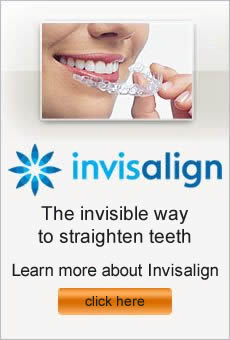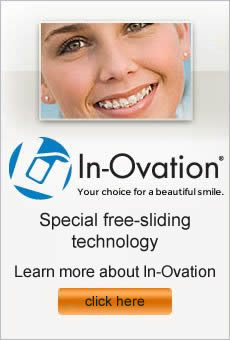Problems with your bite, or the way your teeth and jaw fit together, can wreak havoc on your mouth. It can be painful, unattractive, and lead to other problems like tooth decay. A bad bite, or malocclusion, is one of the most common reasons that orthodontists fit patients with braces.
What does it mean to have a bad bite?
When your doctor says you have spacing or alignment problems, it’s likely that you have a bad bite. This includes crooked, crowded, or protruding teeth. A bad bite also includes having your upper and lower jaws meet improperly, even if your teeth look straight. Also, bite problems can be caused by teeth that are too close together or too far apart.
What causes bite problems?
The most common causes of bite problems are thumb-sucking, heredity, early tooth loss, and mouth trauma.
What are the benefits of correcting bad bites?
Braces can help with problems related to bite issues in a number of ways, including:
• Appearance – correcting a bad bite creates a more appealing smile, and therefore also improves your self-esteem.
• Tooth wear – an uneven bite can cause abnormal tooth wear, which sometimes leads to the need for crowns or veneers. Braces can correct this problem before your teeth have a chance to wear inappropriately.
• Jaw problems – a misaligned bite can lead to painful conditions like temporomandibular joint (TMJ) disorder.
• Teeth cleaning – it is difficult to clean crooked, crowded, protruding, and overlapping teeth. Properly aligned teeth can be more thoroughly cleaned, and therefore have less decay.
Ask kids in the 12 and under crowd, and you’ll get an enthusiastic response to wearing braces on their teeth and getting to select colorful elastics. However, posing the same question to teenagers and adults doesn’t elicit such an excited reply. A major complaint about traditional braces is how they affect the patient’s appearance. There is a revolutionary alternative available today called Invisalign, which can improve your smile without negatively impacting your appearance.
Often called “clear braces,” Invisalign involves wearing a series of clear plastic aligners to shift your teeth. The removable aligners are worn over a period of one to two years, and your orthodontist will monitor your progress through visits every four to six weeks.
Almost everyone is a candidate for Invisalign. It can be a great option for teens and adults with fully erupted, healthy teeth. Here are some factors to consider when deciding if Invisalign is right for you:
• Wearing the aligners: the outcome is only as good as the treatment. You must agree to consistently wear the aligners about 22 hours a day, only removing them to eat, brush, or for special occasions.
• Temporary changes in your speech: sometimes the aligners can cause a minor alteration in your speech as you get used to a new set of aligners. This usually goes away as you get used to wearing them regularly.
• Teeth grinding: grinding or clenching your teeth excessively can put extra wear on your aligners. Ask your orthodontist about whether this could impact your success with Invisalign, as each case is unique.
• Staining: if you are hooked on coffee, tea, or other items known to commonly stain teeth, your aligners may get stained as well. Be careful about consuming too many staining items without brushing soon after.
Invisalign is becoming one of the most popular choices for people interested in straightening their teeth without wearing traditional braces. Your dentist or orthodontist will be able to help you determine if you are a good candidate, and to get you started on the road to a beautiful smile.
The spookiest night of the year is drawing close, and your little ghouls and goblins will be heading out to scare the neighbors and score some treats. You probably already know most of the safety rules when it comes to trick-or-treating, such as carrying a flashlight and wearing light-colored or reflective costumes. Another big one is inspecting the treats before your kids dig in, to make sure all the candy is safe. However, have you thought about looking at the candy for the purpose of making sure it’s acceptable for your child’s braces-clad teeth?
Your child’s orthodontist probably warned you to steer clear of certain foods that are known to commonly break or bend braces. Some of these items are pretty easy to avoid most of the time, but a jack-o-lantern full of candy can be very tempting. Many of the popular treats that your child may collect when trick-or-treating fit the guidelines of being hazardous to teeth undergoing orthodontic treatment. Here are some items to avoid:
• All hard candies
• All chewy candies
• Nuts
• Licorice
• Caramel
• Taffy
• Jelly beans
• Bubblegum
• Popcorn
• Hard pretzels
• Caramel and candy apples
This may seem like a list that will take all the fun out of Halloween, but there are still many treats that your child can enjoy. Some braces-friendly examples are plain chocolate candy, peanut butter cups, sliced apples, and soft cookies and cupcakes. Just remember to look for treats that aren’t sticky, chewy, hard, or crunchy. Also, most parents tend to give their children a free pass about indulging in sweets on Halloween, but don’t forget your regular brushing and flossing routine. Maintaining healthy teeth will help you have a hauntingly good time on Halloween, and throughout the year!
After you finish orthodontic treatment, you should enjoy a stunning smile. Unfortunately, your teeth will naturally want to shift out of alignment. Most orthodontists have their patients wear retainers as the final phase of orthodontic therapy. These oral appliances work to keep teeth in the desired position.
What types of retainers are available?
At one point, orthodontists only used the plastic and wire retainers. This is still the most common type of retainer. Clear, plastic retainers have recently gained popularity. These devices also work well to keep teeth in place.
How long will I need my retainer?
Initially, you will probably wear your retainer about 22 hours a day. Your orthodontist will monitor your progress and let you know when you can cut the time back. Most patients will wear their retainers for several years after treatment to ensure that teeth don’t shift.
Should I wear my retainer while I play sports?
If your appliance fits well, you can wear the retainer because no risk exists to your teeth; however, the device could fall out and sustain damage. Keep in mind that retainers don’t function as mouth guards, so you still need to wear that appliance to protect your mouth.
How do I care for my retainer?
When you remove the appliance, make sure to gently brush and rinse it before storing the retainer. Always place the retainer in its case when you aren’t wearing the appliance so that it doesn’t get broken. Put the case in safe place, out of reach from young children or family pets.
Orthodontic retainers at Mehdi Fotovat Sherman Oaks Orthodontist
Do you cringe at the thought of metal braces, but still want to obtain a fantastic smile? You shouldn’t have to sacrifice your mature image to straighten your teeth. With Invisalign clear braces, you don’t have to endure the discomfort or embarrassment of traditional orthodontia.
Adult and older teen patients often love the option of Invisalign clear braces. Through a series of clear, custom aligners, this advanced system gently shifts crooked teeth into the desired position. With these virtually undetectable aligners, only you and your orthodontist will realize that you are undergoing treatment to improve your smile.
Before beginning treatment, your orthodontist will first complete a full analysis to make sure Invisalign is the right solution for your case. Your doctor will then take photos and collect data to create an exact treatment plan. Using advanced 3-D technology, the Invisalign lab will translate the orthodontist’s instructions into a complete series of aligners.
During treatment, you will wear each aligner for around two weeks; then, switch to the next aligner. You will visit the orthodontist every four to six weeks so that the doctor can monitor your progress. Remove the aligners when you eat, brush, and floss, or for special occasions. In about 12 months, you can reveal a flawless smile to family and friends.
Benefits of Invisalign:
• Makes cleaning and home care easier
• No bulky metal brackets
• No painful adjustments
• Usually requires less treatment than traditional therapy
Invisalign at Sherman Oaks Orthodontist Mehdi Fotovat Valley Village, CA



